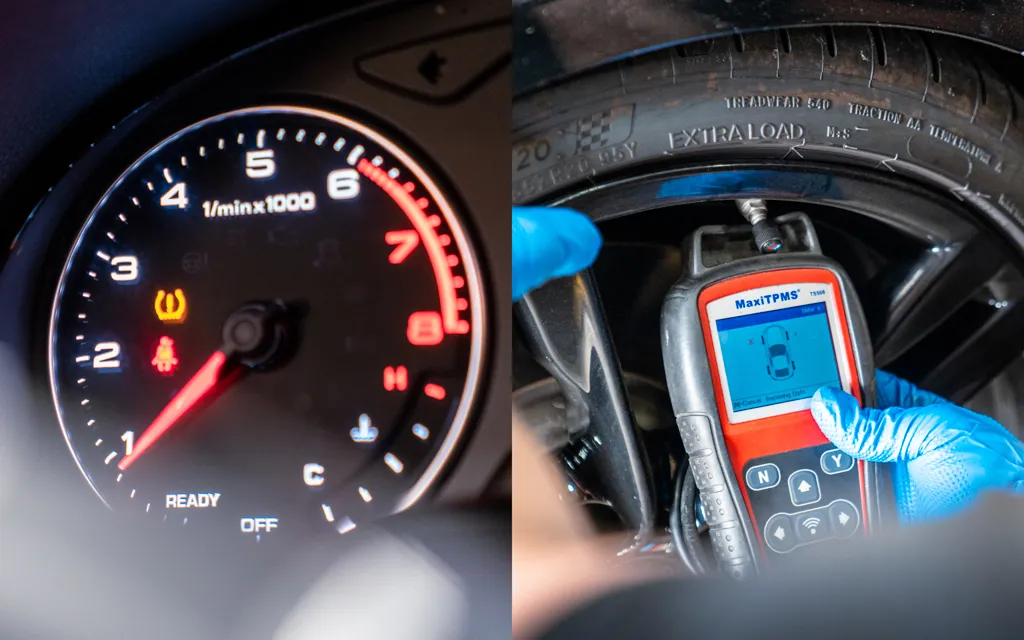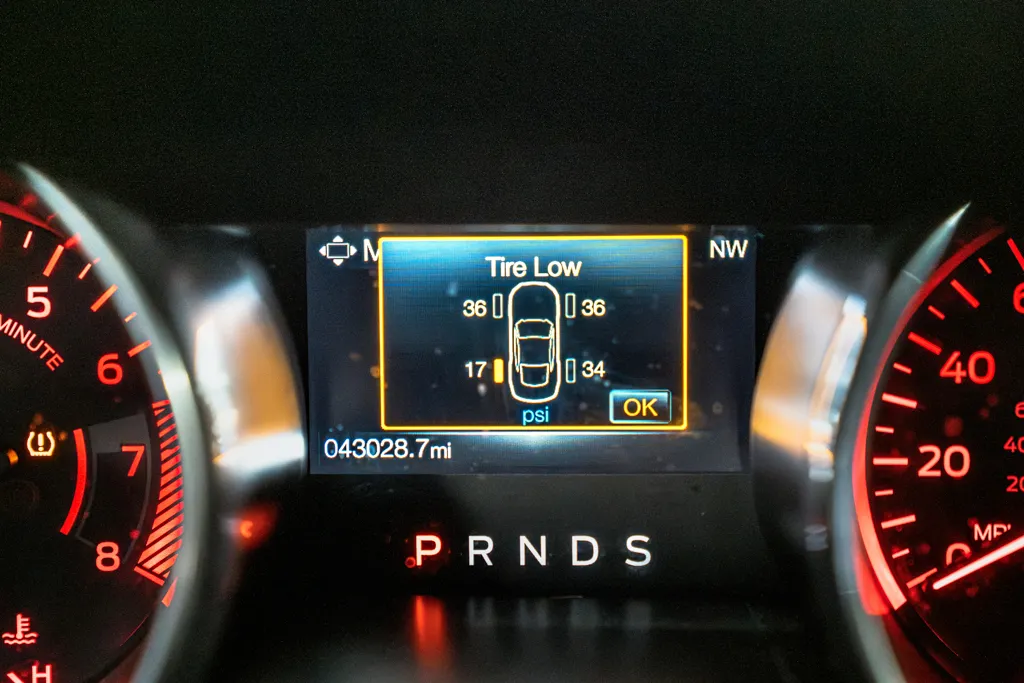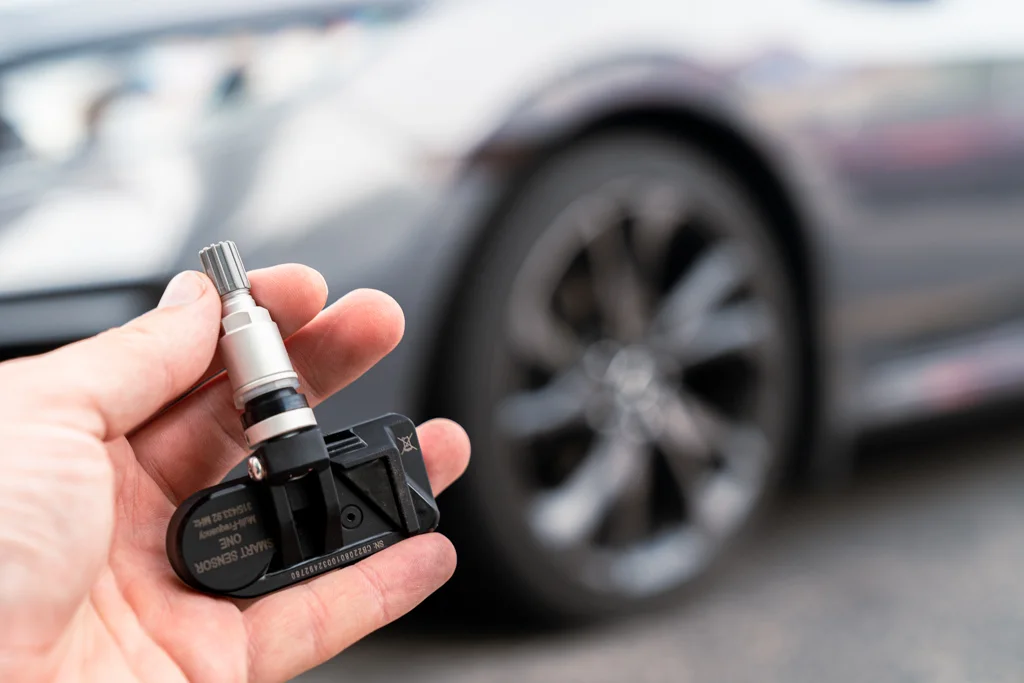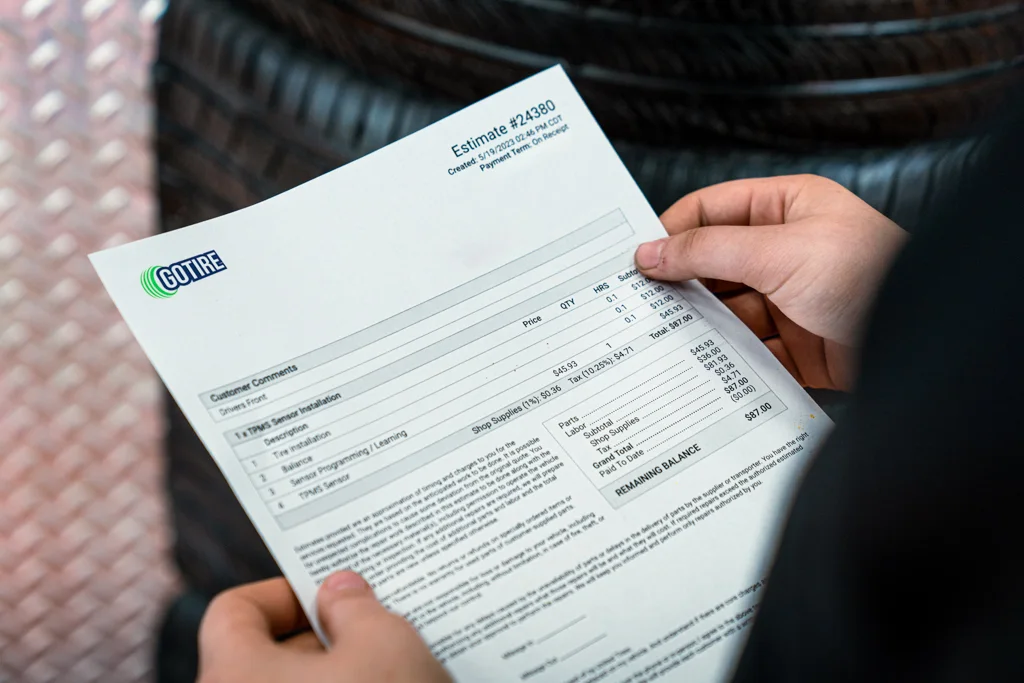Table of Contents
- Why is it important to service a tire pressure monitoring system?
- What is the Tire Pressure Monitoring System in the first place?
- What does it mean when your car says “service tire monitor system?”
- How does a tire monitoring system go bad?
- Can a service time monitor system be fixed at home?
- What are the benefits of properly inflated tires?
- Is it safe to drive with the “Service Tire Monitor System” display on?
- How much does it cost to replace a tire sensor?
- Frequently Asked Questions
Your vehicle’s tire pressure monitoring system, or TPMS for short, is an important electronic safety feature, and like all components of a car, it needs to be serviced once in a while. Keep reading to understand why it’s important to service tire pressure monitoring systems and keep them functioning in tip-top shape.

Why is it important to service a tire pressure monitoring system?
Put simply, a TPMS monitors the tire pressure in your tires and alerts you when the air pressure has dropped or risen to a level that makes for unsafe driving conditions. Luckily, we don’t need to be expert mechanics to know what’s wrong with our cars these days; powerful onboard computers will often alert us to problems long before we would have become aware of them otherwise. Not only will your tire monitor system light alert you if one of your tires needs servicing, but most modern cars will alert you if the system itself needs servicing.
What is the Tire Pressure Monitoring System in the first place?
The Tire Pressure Monitoring System is a system of electronic sensors that monitor the air pressure within your vehicle’s tires. They can tell if the tire pressure has become too high or, as is more often the case, too low. Each wheel has a TPMS sensor, typically embedded within the tire’s valve stem. The sensors are continuously sending information about the tire pressure to the car’s computer. These tire pressure sensors will alert you via the TPMS light on the dashboard if one or more tires need air. If you have seen this symbol on your dashboard, then it is time to ensure your tires have the proper pressure.
What does it mean when your car says “service tire monitor system?”

Like all components and systems in your car, the tire monitoring system can sometimes need a little TLC. If you see the phrase “Service tire monitor system” pop up on your dashboard, this indicates an issue with some part of the TPMS. Tire sensors are a sensitive piece of electronic equipment, and they can be damaged by accidents, hitting a large pothole, or just time itself.
How does a tire monitoring system go bad?
Due to the location of these sensors, often in the valve stem of each tire but also sometimes attached to the rim of the wheel, they are exposed to a lot of bumps and bangs. Any number of things can cause one of them to fail or need servicing.
Tire sensors
The tire sensors are complicated electronic equipment, essentially a small computer located within your wheels. If something has caused one or more of them to malfunction, replacing TPMS sensors is your only option.
Battery issues
Each TPMS sensor battery is non-replaceable, so a dead battery inside your TPMS tire sensors is equivalent to a broken sensor. So if a sensor has a dead battery, the entire sensor will need to be replaced.
Can a service time monitor system be fixed at home?

Replacing a malfunctioning tire sensor requires a lot of specialized equipment that most people will not have at home, such as a tire machine. This would be a tough job for even the best home mechanics with the proper tools, so best to take it in and let the professionals handle it.
What are the benefits of properly inflated tires?
Maintaining proper tire pressure in all of your vehicle’s tires is important, including the spare tire. Properly inflated tires give your vehicle the optimum traction, which is important for braking, turning, cornering, etc. Underinflated or overinflated tires compromise the tire’s shape and form and, therefore, the amount and quality of contact that tread has with the road.
Correct pressure also gives the tire structure. Without proper inflation, the tire’s sidewalls, the weakest part of the tire, will likely give out and fail. This can result in an unsightly tire bulge or, even more seriously, a tire blowout which can be very dangerous.
Is it safe to drive with the “Service Tire Monitor System” display on?
It’s important to note that with the service tire pressure monitoring system light on, this means that a TPMS sensor is not sending information to the system. While it’s an important safety feature to stay on top of, it does not necessarily mean an imminent emergency. In fact, your tires might have the exact correct pressure that they need.
If you can get by for a few days by checking your tire pressure manually with a tire pressure gauge, then you can buy yourself some time before you need to replace the sensors or have the system checked.
How much does it cost to replace a tire sensor?

Luckily, this service type is much cheaper than it used to be. Your average TPMS sensor costs about $20-80, although buying just a single sensor can be hard. The labor cost is harder to estimate and highly depends on the type of car you drive and the cost of living in your location. However, this is not an especially difficult job, and labor costs are usually less than the sensors’ cost.
Unfortunately, not all new tires come equipped with new sensors, so you won’t be getting a new TPMS every time you buy new tires. The sensors will be transferred from your old tires to the new ones.
Frequently Asked Questions
Can I drive with my TPMS light on?
Yes, but it is not recommended. When your TPMS warning light comes on, it means that there is a problem with the air pressure in one or more tires. Your tire pressure monitor system is very sensitive and will alert you when the pressure is off, even by a few PSI. This might not be an emergency, but it’s best not to ignore it for too long, as this can lead to a flat tire.
Why is my low TPMS light on, but my tires are fine?
If you’re low tire pressure, the light is on, it’s best to check your tires first to make sure manually. If you’ve tested several times and found that they have the correct pressure, there could be a problem with the TPMS sensors or the system itself. After adjusting the air pressure in your tires, the system sometimes takes a few minutes or a bit of driving to reset.
How much does it cost to replace a TPMS sensor?
To service the tire monitoring system usually mean replacing the entire TPMS sensor within the tire. The sensors themselves usually cost between $20 and $80, depending on the type. Labor can range anywhere from $10 to $40 depending on car type, location, etc.









